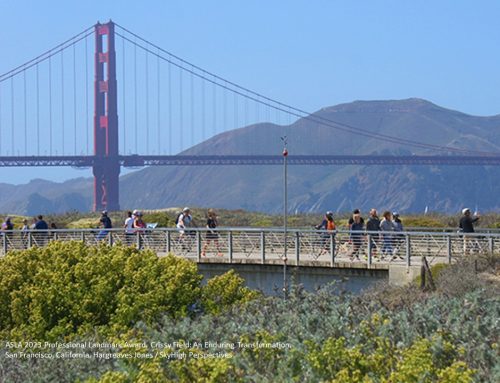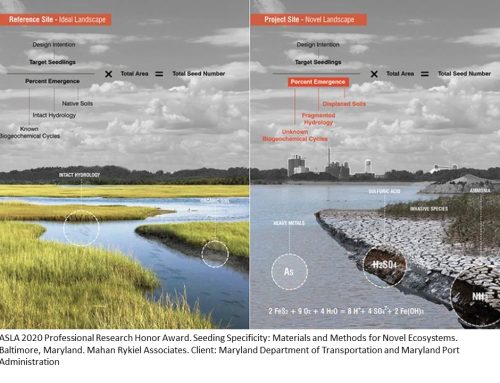BY MICHELLE HORTON
Two experts from Stanford's Water in the West program explain the potential impacts on the future of water in California of the proposed plan to downsize the $17 billion Delta twin tunnels project.
California Gov. Gavin Newsom announced this week his plan to downsize the Delta twin tunnels project, a controversial $17 billion water conveyance system aimed at diverting water from the Sacramento-San Joaquin River Delta to the Central Valley and Southern California. The tunnels are intended in part to reduce the impacts that massive pumps at the south end of the Delta currently have on Delta hydrology and ecosystems.
San Joaquin Sacramento Bay Delta, looking west out of Sacramento
The Sacramento-San Joaquin River Delta provides water to the San Joaquin Valley, Southern California and portions of the San Francisco Bay Area. (Image credit: Steve Martarano / U.S. Fish and Wildlife Service)
Part of the California Water Action Plan signed by Gov. Jerry Brown in 2014, the twin tunnels project proposed to build two tunnels, 40 feet high, 35 miles long, buried 150 feet below the Delta. Formally known as California Waterfix, the project also involved building three new water-diversion facilities to restore a more natural direction of river flow in the South Delta, benefiting local estuaries and fisheries.
In his first State of the State speech, Newsom expressed his support for a one-tunnel system, which could potentially save billions of dollars, but begs the question of whether a single tunnel can effectively transport enough water to thirsty regions of California in an ecologically friendly way. Leon Szeptycki, executive director of Stanford's Water in the West program, and Timothy Quinn, the Landreth Visiting Fellow at Water in the West, discussed the future of water in California and potential impacts of a tunnel system.
What is the Delta Twin Tunnels project?
Szeptycki: The challenge California has always faced is that precipitation does not fall where and when we need water. Rain and snow fall most heavily in the Sierra and the north, while we use large amounts of water for cities along the coast, as well as farms in the relatively arid Central and Imperial valleys. Virtually all precipitation comes during the winter wet season. We currently have a complex infrastructure system to store water for use in the summer and dry periods, and to transport it to the coast and to the south for use by cities and farmers. The Bay Delta is the hub of that system, and currently we use massive pumps to pull water that comes from the San Joaquin and Sacramento basins. These pumps disrupt the hydrology and ecology of the Delta in a number of ways. Pumping water south, as well as a variety of other human activities, has dramatically altered the Delta's ecosystem.
Quinn: The tunnels project is one element of a comprehensive California water action plan and this one element is pretty important. The tunnels are not a supply project, they are a conveyance project. They are intended to improve the way water supplies move through or around the Delta, which is at the heart of California's water system. They're not about creating more supply, they're about conveying it in a smarter way for the environment, for water quality, for system sustainability and durability.
What role do the tunnels play in the future of California's water management?
Szeptycki: As the climate warms, the swings between wet and dry periods are expected to become more extreme. We have seen this pattern in recent years, with a five-year drought that started in 2012 coming to an end with a record wet year during the winter of 2016-17. One role the tunnels, or tunnel, could play to help cope with this is to allow us to send more water south during very wet periods, and it could be particularly useful to recharge aquifers. That water can be stored in the ground and increase our ability to rely on groundwater during droughts without depleting those aquifers.
Why has the project been controversial? Can you explain concerns about the impact the tunnels would have on the Delta ecosystem?
Szeptycki: Pumping surface water alters the currents and salinity of the Delta, which in turn can have harmful impacts on the ecosystem and a number of fish species. Because some of those fish species, such as Chinook salmon and Delta smelt, are listed under the Endangered Species Act, there are times when the pumps cannot be used and water deliveries are curtailed. The tunnels would lessen these environmental impacts and increase flexibility of shipping water south. Of course, they are also very expensive, building them would be disruptive, and many view the tunnels as increasing the risk that we will lean on the Delta system even more, making the situation there worse.
Quinn: Certainly, all the controversies about the Delta demonstrate how hard it is to do complex natural resource policy in California. The fact that it is so controversial doesn't mean it's not important. I would argue that this is the biggest infrastructure challenge facing California's $2 trillion a year economy. Nothing is out there that's bigger than how do you move water around from where Mother Nature gives it to us to where we need it for our economy and our lifestyle.
The main arguments by opponents of the tunnels are that the tunnels will facilitate a "water grab" by powerful Southern California interests and that the project will devastate the Delta environment and harm endangered fish. The first argument is exaggerated at best. As noted, the tunnels are a conveyance project that moves the intakes of water supply but doesn't increase their capacity. The second argument has to be taken seriously. After all, one of the primary reasons for the project was to improve Delta conveyance to reduce conflict between water supply operations and the Delta ecosystem.
Gov. Newsom said he supports a single tunnel option. Will this still provide enough water to California?
Quinn: This will no doubt stimulate considerable debate amongst those who support the bigger project, but I think that we can make a one-tunnel project work. One concern is whether it can move enough water during atmospheric river events to replenish groundwater basins, especially in the San Joaquin Valley, as we implement the Sustainable Groundwater Management Act. Another objection may come from knowledgeable people within the biological community. Many biologists want as much separation of the water supply water from ecosystem water as possible. Going from two tunnels back to one lessens that.
The challenge California has always faced is that precipitation does not fall where and when we need water.
LEON SZEPTYCKI
Executive Director, Water in the West
Water recycling, storm water capture and repairing existing infrastructure have been described as alternatives to the twin tunnels. Has any research been done to demonstrate the need for this sort of infrastructure project?
Quinn: This is the great false dilemma in the Delta debate today. As long as you're going to be moving significant amounts of water from the Sierra down through the system in or around the Delta, you're going to have to think about conveyance. This was never intended to solve the supply problem, and that gets misunderstood on both sides of the debate.
Of course, we need to invest in local resources, storm water recovery, recycling and even ocean desalination, which is controversial, but some parts of California are going to invest in that too. Investments in local resources have been happening in a big way during the past quarter century and I have no doubt they will continue to grow under this new administration. You need to check the box next to "all of the above," but the notion that if we fix local resources we wouldn't need to fix our conveyance system is just false.
Newsom also said he supports a portfolio approach to build water infrastructure and meet long-term demand. What does that system look like?
Quinn: The fact that Gov. Newsom has made it clear that he supports a portfolio approach is probably the best news I've heard coming out of the Newsom administration. A portfolio system looks a lot like Gov. Brown's California Water Action Plan, and you need to focus on the comprehensive plan that the whole state needs, not just on one controversial element of it. That portfolio is going to include lots of conservation and very aggressive local resource development, which is an absolute must for the future of California water. But it is also going to include more storage; conveyance improvements, whether that is one or two tunnels; forest management; habitat restoration on a massive scale, especially flood plain restoration to reconnect land and water; water markets; safe drinking water for everyone in California; and groundwater management. All of these elements are critical in a comprehensive plan that works for all Californians. Taking this approach to California water policy has been a central feature of the water policies of every governor going back to Pete Wilson. The fact that Gov. Newsom will continue in the direction of a comprehensive water plan is very good news for any Californian who cares about water policy.
Leon Szeptycki is also professor of the practice at the Stanford Woods Institute for the Environment. Water in the West is a joint program of Woods and the Bill Lane Center for the American West. Timothy Quinn has been involved with California water policy for the last 30 years, most recently as executive director of the Association of California Water Agencies.




